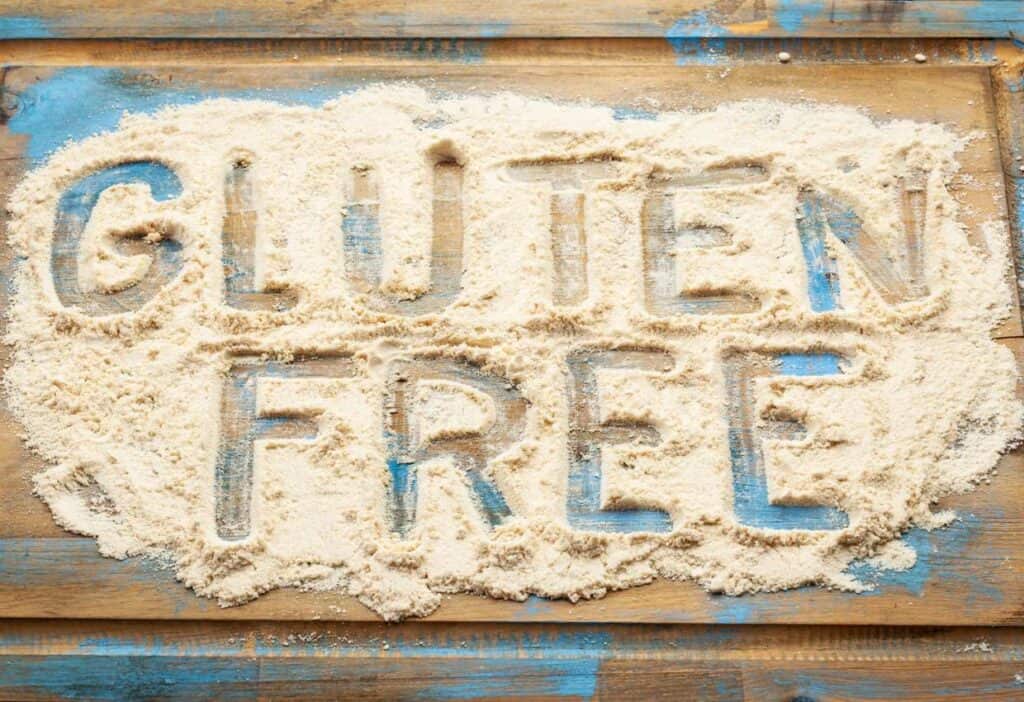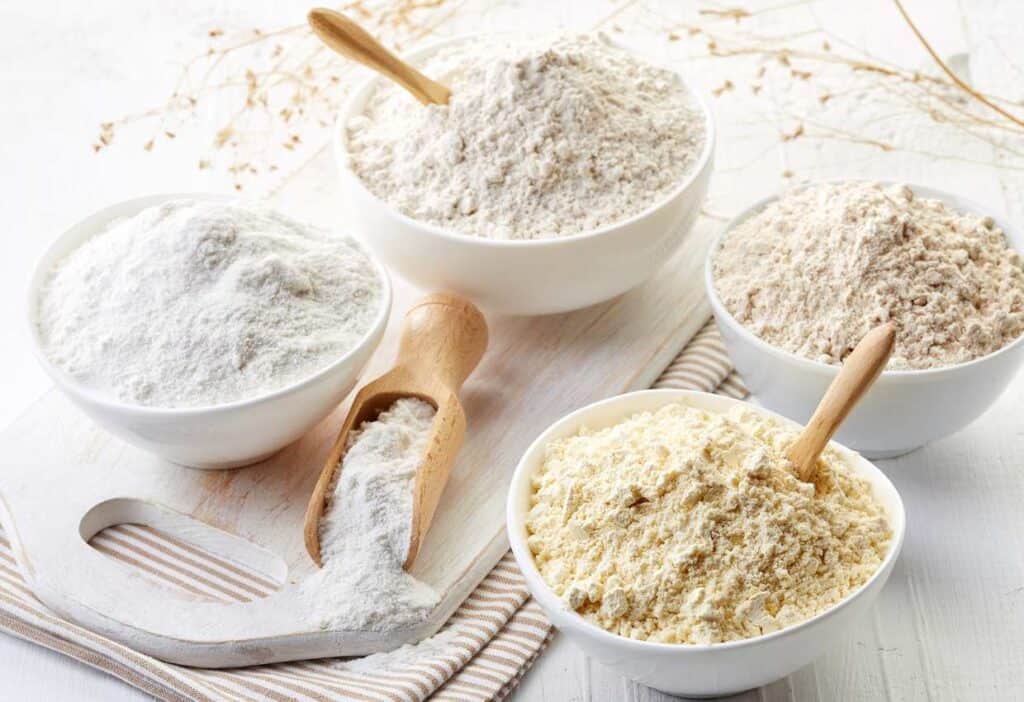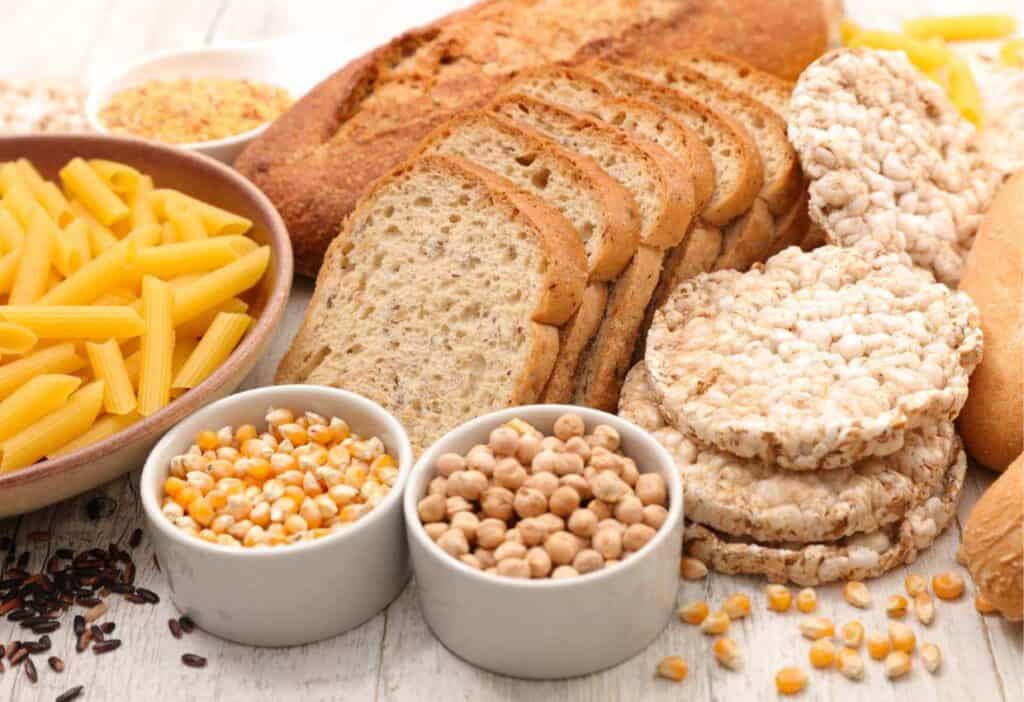Gluten-free baking can be challenging, but with the right tips and tricks, you can create delicious and satisfying treats. Explore the secrets to perfect texture and flavor in gluten-free baking using a variety of gluten-free flours.

Gluten is a protein found in wheat, barley and rye, which can cause digestive issues for some individuals. Gluten-free flours are made from alternative grains, nuts and seeds and can substitute traditional wheat flour in baking and cooking.
Many types of gluten-free flours are available, each with its unique taste and texture. When choosing a gluten-free flour, it is important to consider its intended use, as some flours are better suited for certain types of baking or cooking than others.
Gluten-free flour can be used to make various dishes, from bread and cakes to pasta and

Common types of gluten-free flours
There’s no shortage of flours to choose from in the world of gluten-free baking and cooking. Here are some of the most common gluten-free flours and their characteristics:
Almond flour
Almond flour is made from ground almonds. It has a nutty flavor and is an excellent source of protein and healthy fats. Almond flour is especially great in cookies and as a low-carb alternative to breadcrumbs.
Rice flours
Rice flour is a versatile gluten-free flour that comes in several varieties. Sweet white rice flour is stickier and often used in Asian desserts. Brown rice flour makes a great one-to-one alternative for wheat flour all on its own and makes for a great gluten-free pasta dough. And white rice flour is an excellent addition to gluten-free flour blends.
Coconut flour
Coconut flour is made from dried and ground coconut meat. It has a slightly sweet flavor. Coconut flour is unique in that it absorbs more liquid than wheat flour. For every cup of wheat flour you would typically use, you would only need ¼ cup coconut flour. Additionally, coconut flour requires that a binding agent like eggs is used. In contrast, some gluten-free flours can get away without any.
FDL’S 75 Best Bites

Our cookbook with 75 tasty recipes will be your go-to kitchen companion for easy dinners with ad-free recipes right at your fingertips. Crafted by experienced chefs and recipe developers, this collection offers a treasure trove of tried-and-true dishes that make mealtime a breeze.
Get the Recipe: FDL’S 75 Best Bites
Buckwheat
Despite its name, buckwheat is not related to wheat and is gluten-free. Buckwheat flour has an earthy flavor and is often used in pancakes, waffles and soba noodles. It has excellent binding properties and can be used as a standalone flour in many instances.
Gluten-free all-purpose blends
Gluten-free all-purpose blends are a mixture of different gluten-free flours and starches designed to imitate the taste and texture of wheat flour and be used in recipes in a one-to-one ratio. They can effectively be used for most gluten-free baking recipes.
Other gluten-free flours
Many other gluten-free flours are available, including sorghum flour, millet flour, tapioca flour, amaranth flour, quinoa flour, corn flour, cassava flour, chickpea flour, teff flour and arrowroot flour. Each has unique characteristics and can be used in various recipes. With some experimentation, finding the perfect flour for any recipe is possible.
“I have quite a few go-to flours for gluten-free baking but the one I use most frequently is oat flour. I grind it myself from high-quality gluten-free certified oats and since I always have those on hand, I never have to run out to the store for more when baking. Oat flour consistently performs well in baked goods and I appreciate its lower price point than some of the other specialty flours.”
— Gina Matsoukas, Running to the Kitchen

Using gluten-free flours in baking
When baking gluten-free, it is important to use a flour or flour blend that mimics the properties of regular flour, as gluten-free flours lack the gluten protein that gives baked goods their structure and texture.
Baking bread
Baking gluten-free bread can be challenging, as many breads, like gluten-free sourdough, require a strong structure to rise properly. To achieve this, it is recommended to use a blend of gluten-free flours, such as brown rice flour, sorghum flour and tapioca starch. Adding xanthan gum to the blend can also help improve the texture and structure of the bread. It is also vital to use yeast that is specifically labeled as gluten-free when baking gluten-free bread.
Making cakes and cookies
When making cakes and cookies with gluten-free flour, using a blend with starch such as tapioca or potato starch is helpful. This will help create a lighter texture and prevent sweet treats from becoming too dense.
Creating pizza crust
Gluten-free pizza crust can be made from various gluten-free flours, each with a unique taste and texture. It is important to note that gluten-free
Adding baking powder to
Overall, experimenting with different gluten-free flour blends and testing recipes is key to achieving the desired texture and structure in gluten-free baked goods. You need not miss out on your favorite baked goods when on a gluten-free diet.
In conclusion
When choosing a gluten-free flour, it’s essential to consider factors such as flavor, texture, and the type of baked goods you’re making. With so many options available, there’s certain to be a gluten-free flour that’s perfect for your pantry.
Kristen Wood is a photographer, writer and creator of MOON and spoon and yum and Schisandra & Bergamot. She is also the author of Vegetarian Family Cookbook, Fermented Hot Sauce Cookbook and Hot Sauce Cookbook for Beginners. Her work has been featured in various online and print publications, including Elle, Martha Stewart, Yoga Journal and more.